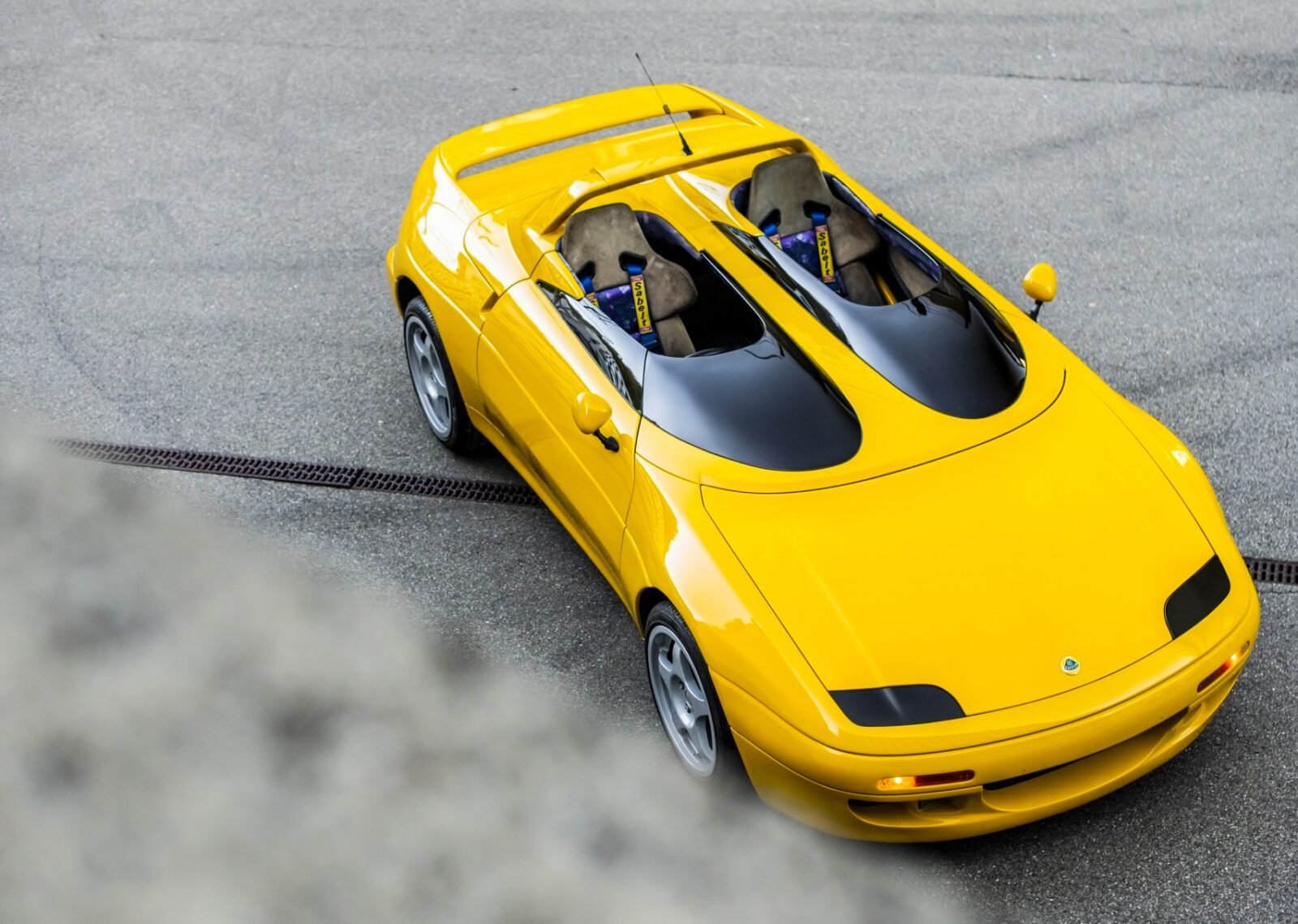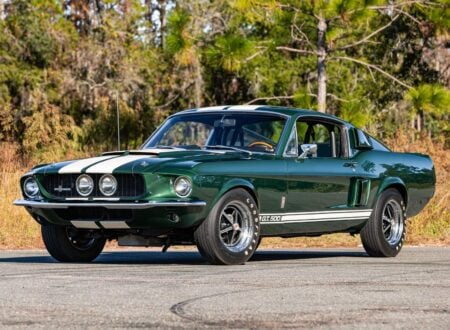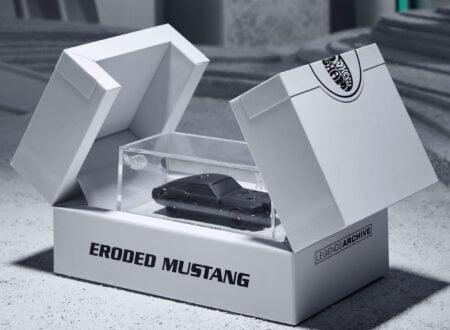This is the 1990 Lotus Elan M200 Speedster concept car, just one was made and it’s been largely kept hidden from the public for decades.
It’s now being offered for sale as a unique piece of Lotus’ history. It was styled by famed British automotive designer Peter Stevens and it uses the turbocharged drivetrain of the Lotus Elan M100.
Fast Facts – The Lotus Elan M200 Speedster
- The 1990 Lotus Elan M200 Speedster is a one-off concept car designed by Julian Thompson. It was based on the Lotus Elan M100 and made its debut at the 1991 Frankfurt Motor Show, where it garnered significant attention for its bold, futuristic design.
- The Lotus Elan M100, on which the M200 Speedster is based, was developed under General Motors ownership and was unique for being front-wheel drive, a significant departure from traditional Lotus rear-wheel drive models. It was powered by a 1.6 liter Isuzu engine, and while praised for its handling, it faced tough competition from the Mazda Miata.
- The M200 Speedster concept featured fixed low-profile headlights, a deeper front spoiler, brake cooling ducts, and a body-colored roll hoop. Its distinctive design included wrap-around tinted windscreens and a subtle rear wing.
- After its motor show appearances, the M200 Speedster was privately owned, eventually joining the collection of renowned Lotus enthusiast Olav Glasius. The car has been kept in excellent condition and is now being offered for sale through an online auction with no reserve out of Switzerland.
The Lotus Elan M100
The Lotus Elan M100 represented the British automaker’s push to create a truly mass-market sports car that would specifically appeal to the American market. Ultimately it would be a failure, but ironically the car that (arguably) defeated it was directly inspired by the original Lotus Elan from the early 1960s.
Above Video: This is the original MotorWeek review of the Lotus Elan M100, it discusses the design of the car as well as the competing Miata, and gives a generally positive overview.
This competitor that was inspired by the earlier Elan was of course the Mazda Miata, also known as the Mazda MX-5 in some markets. Some might argue that the Miata and the M100 weren’t direct competitors due to the fact that the Lotus was far more costly, but the Miata did provide a best-selling alternative with a far lower sticker price.
The Miata was clearly closely based on the design (and underlying engineering) of the original Elan, with both cars based on a steel backbone chassis with a front-mid-mounted DOHC inline-four, independent front and rear suspension, a low curb weight, pop-up headlights, and a simple folding soft top.
The wild success of the Miata was perhaps a good indication that the Elan-based recipe that created it still worked even decades after the Elan had made its first debut back in 1962. Lotus had been working on the development of their own all-new sports car at the same time that Mazda was working on the Miata, but they opted to go in a completely different direction with it.
Lotus had been bought by General Motors in 1986, and with this acquisition came a flood of new money, and a demand that Lotus create a new production sports car that would sell at least 5,000 units annually. Lotus engineers were also tasked on working on some interesting projects for GM, including the active suspension prototype of the Corvette C4, and the Corvette ZR1 version of the C4.
The all-new Lotus Elan M100 would feature classic Lotus engineering cues, like the steel backbone chassis and lightweight fiberglass body, but unusually it would also feature a front-wheel drive system very unlike any Lotus that had come before, or that would come after.
The engine and transmission were sourced from Japanese marque Isuzu, the engine was a 1.6 liter inline four with double overhead cams that was developed in both naturally-aspirated and turbocharged forms, sending power to the front wheels via a 5-speed manual transaxle.
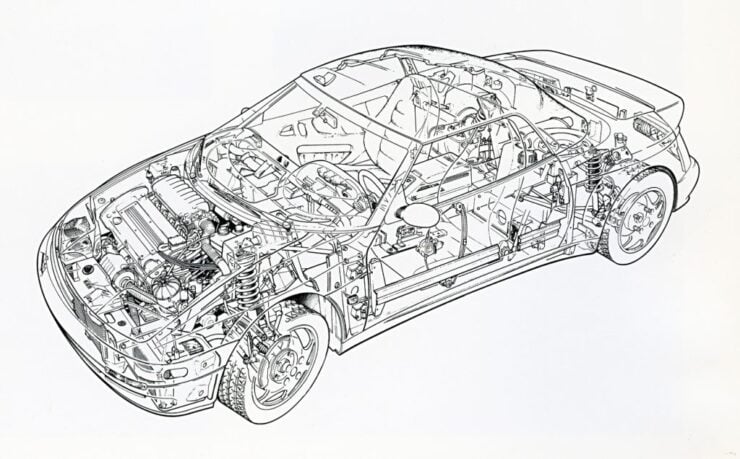

The use of front-wheel drive on the M100 has long been controversial. While period reviews of the car were largely positive, some even calling it the best front-wheel drive car ever made, it became clear that it was going to be a hard sell. Particularly with the rear-wheel drive Miata on sale for far less money.
The Elan M100 would remain in production over two series from 1989 until 1995, with just 4,700 made in total. Kia would buy the rights and tooling to the model, and put it back into production as the Kia Elan from 1996 until 1999.
The Lotus Elise would make its debut in 1996 with an all-new aluminum chassis, a rear-mid-mounted engine, and rear-wheel drive. The Elise would quickly become one of the most beloved Lotus models of the modern age, and as a result many would forget about its front-wheel drive forebear all together.
The Lotus Elan M200 Speedster
The car you see here is a one-off concept car based on the Elan M100, it was designed by Julian Thompson, the man who would later design the Lotus Elise, and it made its formal debut at the 1991 Frankfurt Motor Show.
After this the car would appear in many motoring magazines, attracting much interest, but it seems it was destined to only ever be a one-off design. The M200 Speedster has a revised front end design with fixed low-profile headlights, a deeper front spoiler with inset fog lights, and brake cooling ducts.


It has low-profile wrap-around tinted windscreens rather than a standard large windscreen, a body-colored roll hoop, and a subtle rear wing. The car was a tour de force of early 1990s automotive design, but after its motorshow circuit ended it largely disappeared from public view. It was bought by a Lotus dealership in the UK, then later bought by renowned Lotus collector Olav Glasius.
Glasius had the car refurbished and it became a key part of his collection. It’s now being offered for sale out of Hallwil, Switzerland on Bring a Trailer with a bill of sale and no reserve. If you’d like to read more about it or register to bid you can visit the listing here.
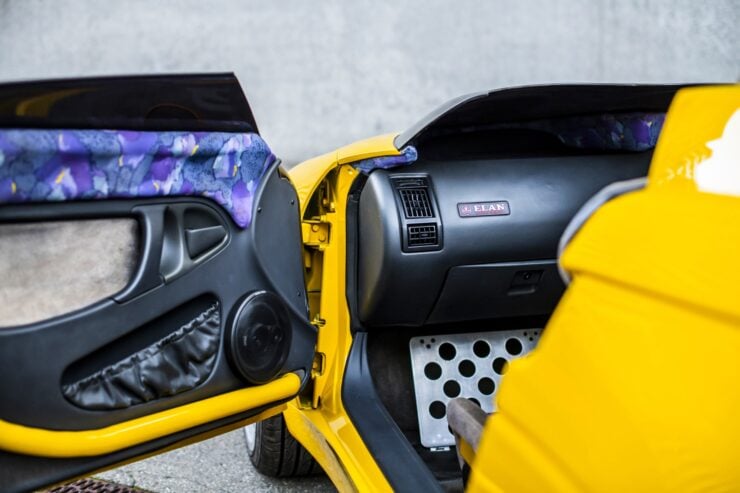

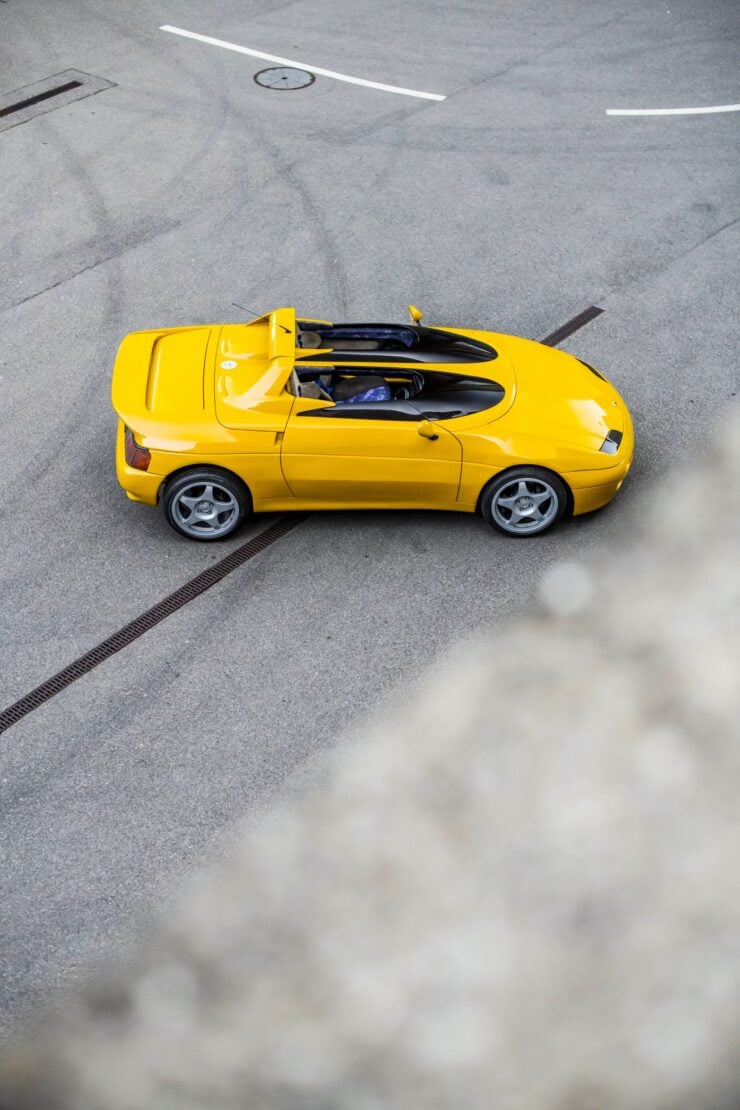






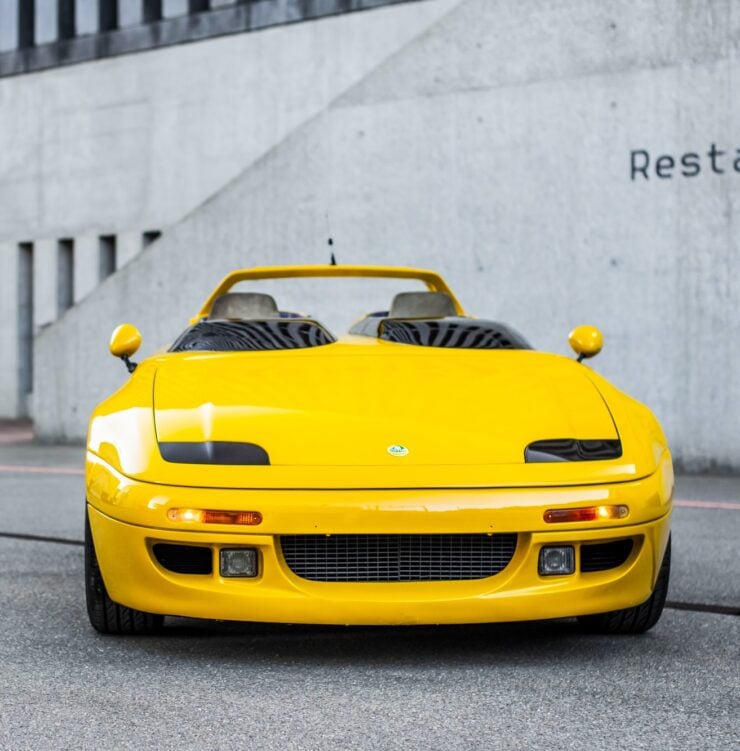
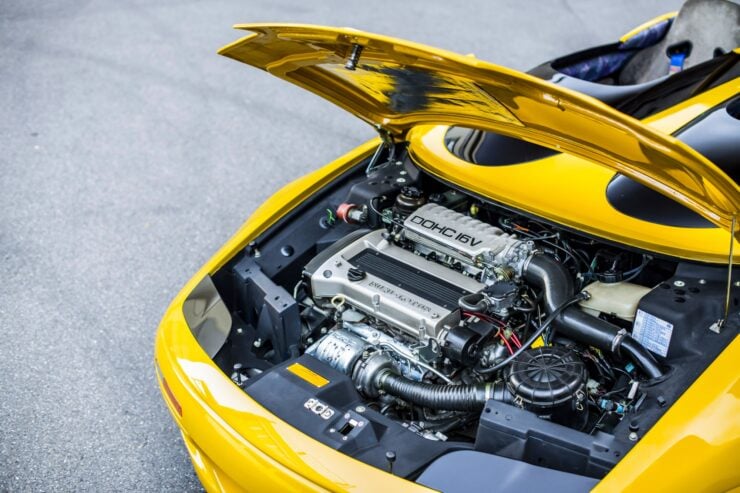
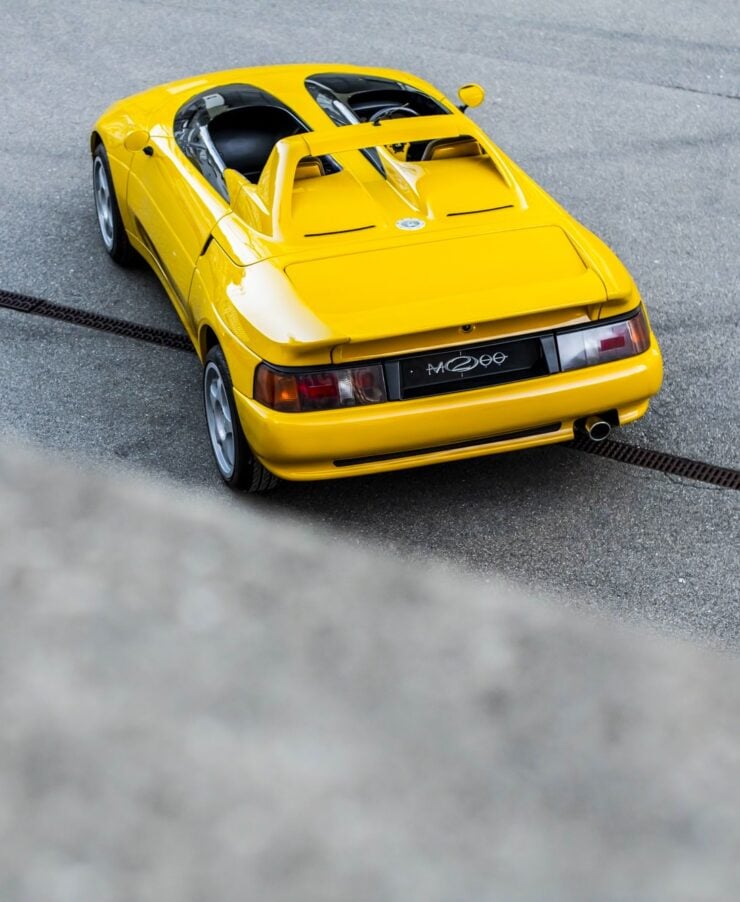
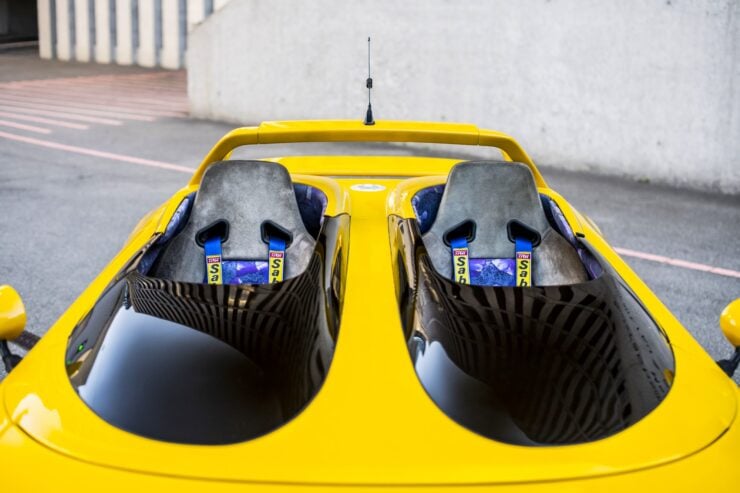
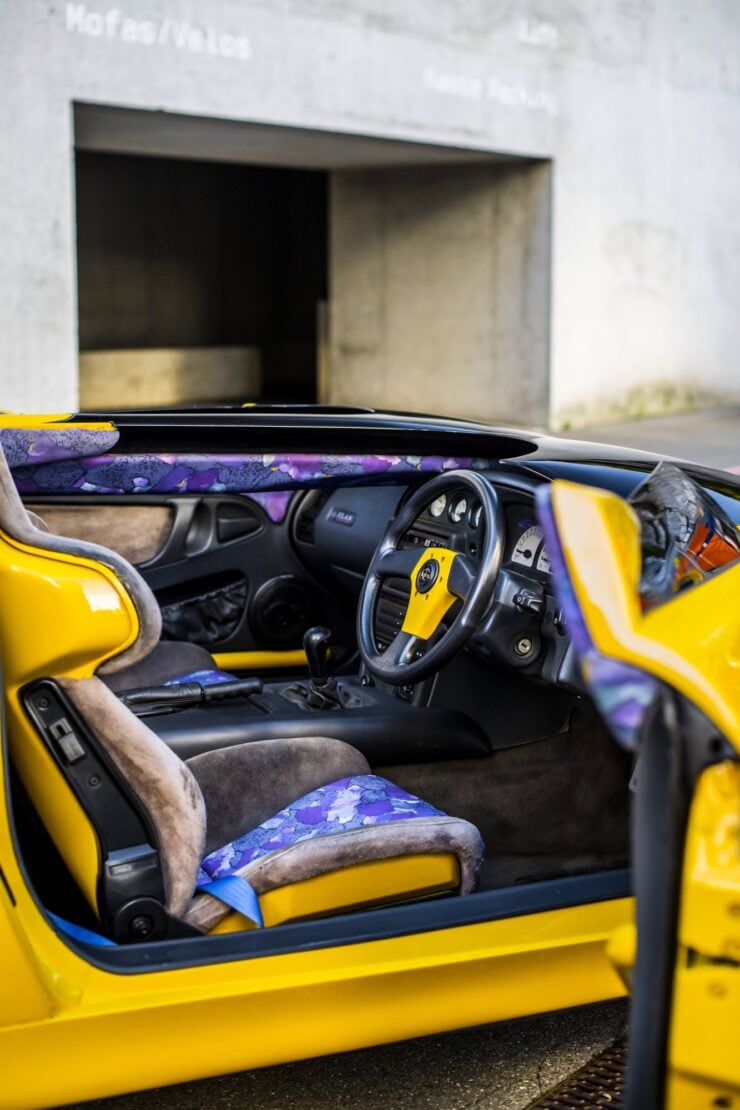
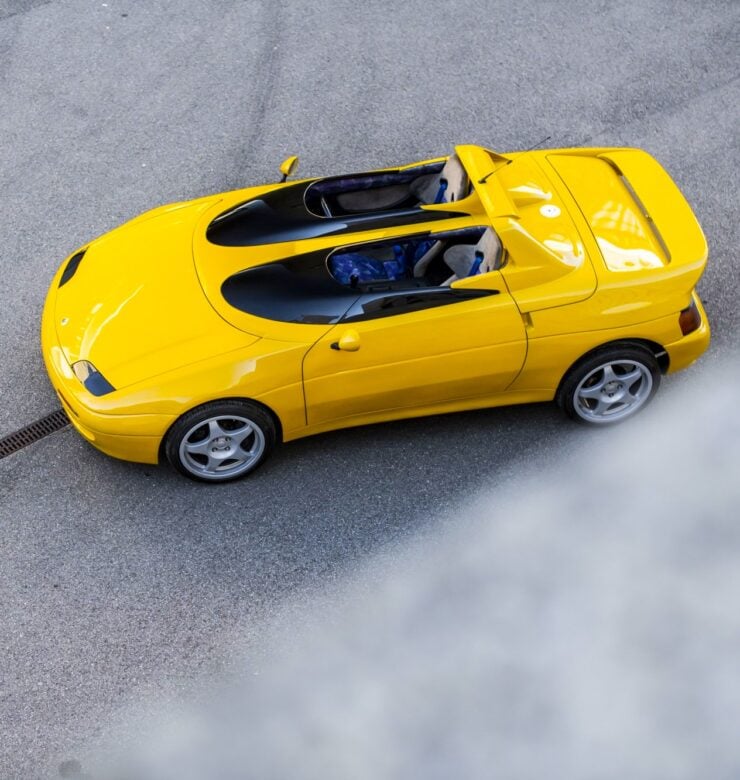
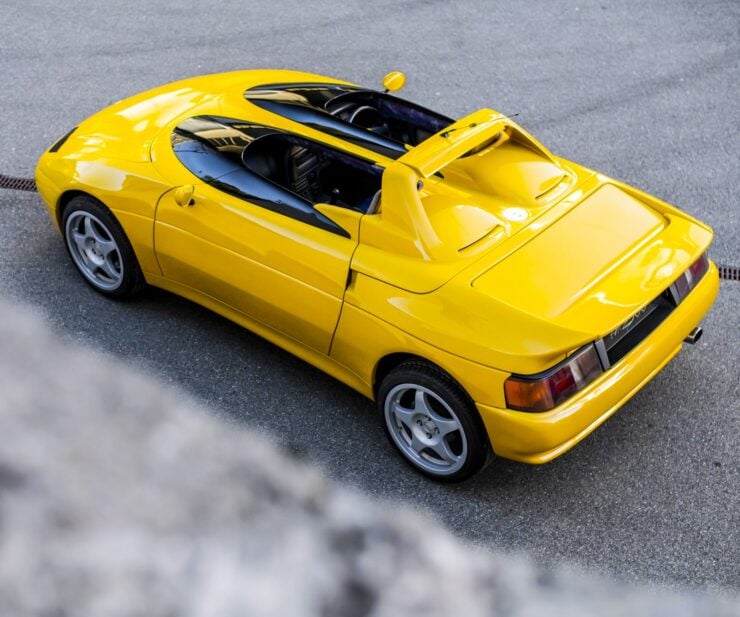

Images courtesy of Bring a Trailer

